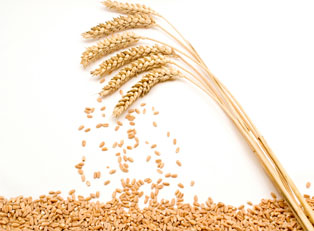History
Dietary Approaches to Stop Hypertension, or the DASH diet, was first created to control and prevent high blood pressure. High blood pressure, or hypertension, affects more than 50 million people in the United States. In 1993, the US National Institute of Health funded one of the largest and most demanding studies to assess the role diet plays in the prevalence of hypertension. Not surprisingly, the 4 year trial proved that diet does affect blood pressure. Furthermore, the DASH diet successfully lowered the blood pressure of trial participants within 2 weeks.
Basic Principles
Although the DASH diet was created to lower blood pressure, it does result in weight loss for many people by emphasizing healthy meals and portion control. When on the DASH diet, you should eat more vegetables, fruits and low-fat dairy. You should also eat more whole grains, poultry and nuts. Because of these choices, you will be consuming foods rich in calcium, potassium and magnesium. These nutrient rich foods help to decrease the chance of cancer, heart disease, stroke and osteoporosis.
There are two versions of the DASH diet. One is a low-sodium DASH diet, and the other is a standard DASH diet. With the standard DASH diet, you can consume up to 2300 mg of sodium per day. With the low-sodium DASH diet, you can only consume up to 1500 mg of sodium per day. Whatever version you choose, you will see the benefits as the DASH diet is low in sodium, saturated fat, cholesterol and trans-fats. In fact, the typical American diet contains up to 3500 mg of sodium each day so even opting for the standard DASH diet will show a decrease in sodium for most Americans.
The DASH diet plan is created around 7 specific food groups: grains and grain products; fruits; vegetables; low-fat or non-fat dairy foods; lean meats, fish and poultry; nuts, seeds and legumes; and fats and sweets. The number of servings you consume from each group depends on your caloric intake. For instance, on a 2000 calorie diet, you should consume 7 to 8 servings of grains each day. However, on the same 2000 calorie diet, you should only consume 4 to 5 servings of nuts each week.
Each of the 7 food groups in the DASH Diet was specifically chosen to provide a healthy diet. Grains and grain products should primarily be whole grains. Whole grains have more nutrients and more fiber. Fruits make a great desert or snack. Eating them with the peel on increase the amount of nutrients you absorb. Similar to fruit, vegetables have vitamins, fiber, potassium, and magnesium. However, if using canned vegetables, you should be extra careful to choose the low sodium variety. The dairy product group provides you with vitamin D, calcium and protein. When selecting a dairy product, choosing a low-fat or fat-free option is best. Lean meat, fish and poultry provide essential protein, B vitamins, zinc and iron. Although nuts, seeds and legumes are healthy choices that contain fiber and phytochemicals, they are high in calories. As a result, this group is limited to several servings per week. Finally, fats and sweets are severely limited because they typically contain saturated fat and trans-fat.
Considerations
Overall, the DASH diet is one of the best options for a healthy life. It has been the top diet according to US News & World Report for the past 3 years and is recommended by the USDA to all Americans. Also, the DASH diet is recommended for everyone by the Dietary Guidelines for Americans. The DASH diet offers a significant amount of flexibility. For example, the foods associated with a Mediterranean diet easily fit within the parameters of the DASH diet. The DASH framework helps everyone, even children, to make healthy choices concerning their diet.
Some people experience difficulty moving into a low-sodium diet because of what they perceive as bland food. Fortunately this can be overcome by two things. First, you should introduce spices and herbs into your cooking to enhance flavor without using salt. Second, be patient. Most people's taste buds adapt within a few weeks.
Remember making a drastic diet change is a challenge for anyone, so the following guidelines are recommended for success: change slowly, reward success, incorporate exercise, and get help if needed.



